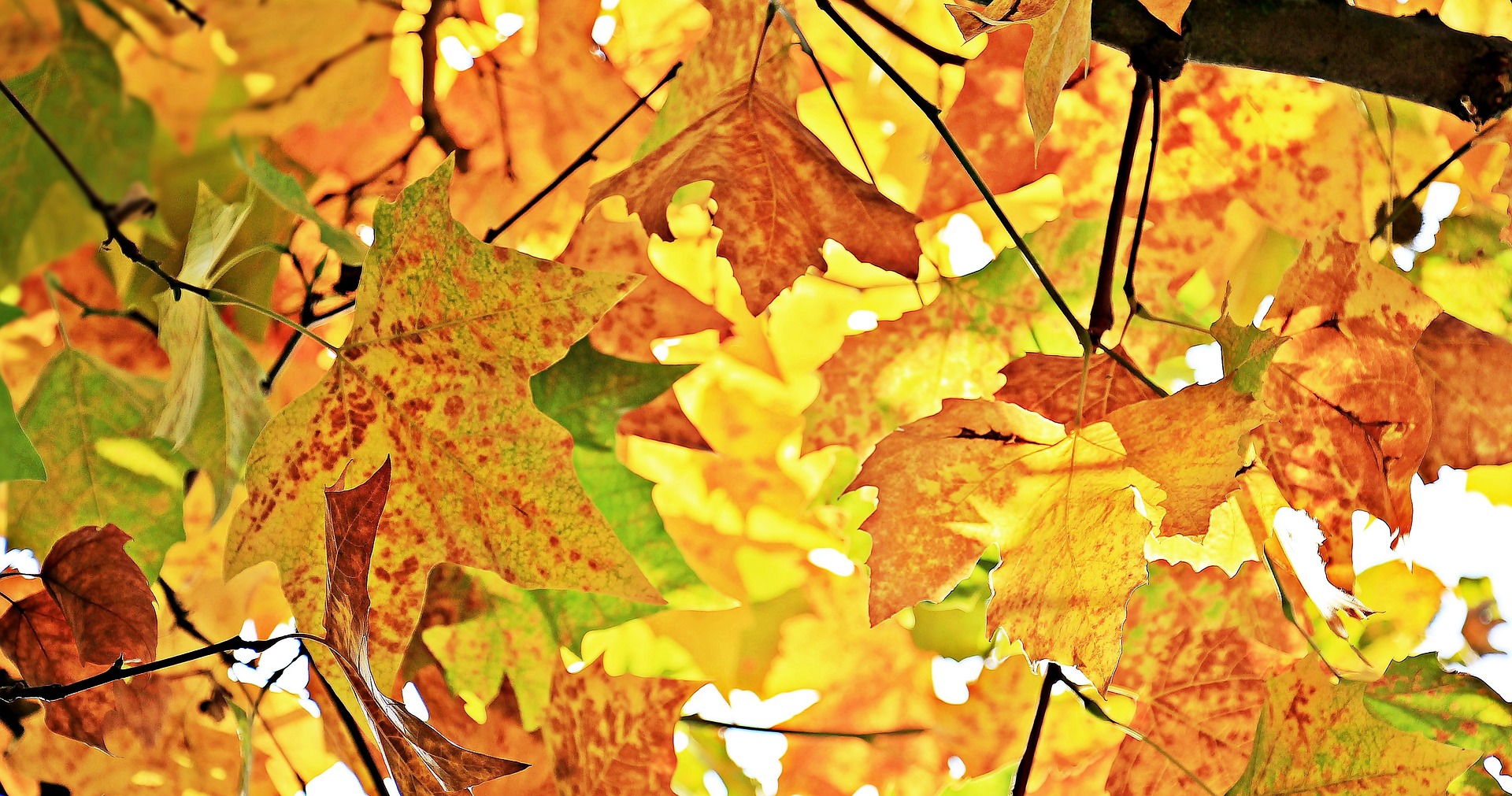 This months science project celebrates fall and the cooler weather. As the seasons change, we find ourselves admiring the brightly colored leaves. For today’s project, we decided to see how different leaves would impact our water samples. Our hypothesis was that different leaves would have different chemical and mineral qualities that would change the composition of the water. While this was true for some of the tests, one test, in particular, had some pretty surprising results.
This months science project celebrates fall and the cooler weather. As the seasons change, we find ourselves admiring the brightly colored leaves. For today’s project, we decided to see how different leaves would impact our water samples. Our hypothesis was that different leaves would have different chemical and mineral qualities that would change the composition of the water. While this was true for some of the tests, one test, in particular, had some pretty surprising results.
Pick Your Leaves
To prepare for this test, head outside and gather some leaves or even some grass. Two of the leaves we chose were still fresh and green, but we did find a nice pretty yellow leaf. With the help of the internet, we were able to identify our leaves as Oak, Southern Catalpa, and Magnolia. In addition to your leaves, you will also need a School and Science Fair Test Kit from TestAssured which has all the tools and equipment that you will need to perform the water tests.

Supplies
The first thing you need to do is gather your supplies:
- Test Assured 4 Test Kit Set with TDS Meter
- 4 cups
- 3 different leaves
- Tap water
- Paper towels
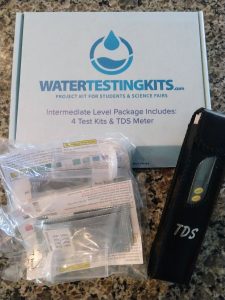
Preparation
In order to make the leaf water solution, you need to crush or tear your leaves. We tore ours into tiny pieces, put each sample in a glass and then added about 1/4 of tap water. Once the water was in the cup we used our fingers to mash the leaves even more. Don’t forget to save one glass without any leaves for your control sample.

Now is a good time to label your vials and list the names of your leaf water samples in the results notebook. You might want to write down some observations about your samples as well. For example, the water with the Southern Catalpa leaf had a yellow tint to it. We also noticed that the Magnolia leaf had a strange odor once we started to tear it up. These observations can be written in the “Notes” on the last page of the results notebook.

Testing
First, you will start with the test for total dissolved solids, using the TDS meter. Because the meter will not fit in the test vials, it is easier to complete this part of the experiment while your samples are still in the cups. To perform the TDS test, simply turn on the meter and submerge the prongs in the samples. Rinse the meter with clean water between each test. Record your results in the results notebook. Be sure to read the TDS meter carefully. High readings will be noted with “x10.”
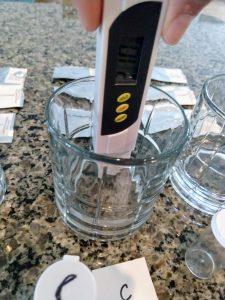
After completing the TDS test, you will need to pour your samples into the vials you labeled. Do this over a sink and be sure to wipe up any spills, so you don’t contaminate the test strips. It’s ok if some of the leaf pieces end up in the vials.
Now you’re ready to get started with the rest of the tests. It’s easiest to work with one sample at a time. Follow these instructions to complete the remaining tests.
Alkalinity/pH/Hardness Test
- Remove the test strip from the packet labeled, “ALK/pH/Hard”
- Pick up the strip on the end with no pads
- Dip the strip in the sample for one second and remove
- Hold the test strip level and wait 10 seconds
- Place the strip as shown in the picture and compare to the color chart for alkalinity, pH, and harness
- Record your results in the results notebook
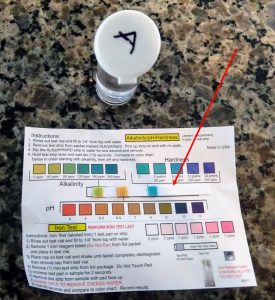
Total Chlorine/Copper/Nitrate/Nitrite Test
- Remove the test strip from the packet labeled, “CL/CO/NA/NI”
- Pick up the strip on the end with no pads
- Dip the strip in the sample three times and remove – DO NOT SHAKE OFF EXCESS WATER
- Hold the test strip level for 2 seconds
- Place the strip as shown in the picture and compare to the color chart for chlorine and copper
- Wait 45 seconds before reading the results for nitrate and nitrite
- Record your results in the results notebook
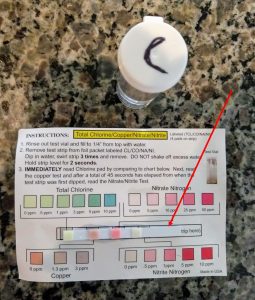
Iron Test (Complete this test last)
- Remove one iron reagent tablet from the foil packet and place in test vial (the reagent could alter the results of other tests which is why the iron test is completed last)
- Place the cap on the test vial and shake for approximately one minute, until the tablet is completely dissolved
- Remove the test strip from the packet labeled, “Iron Test”
- Dip the strip in the sample for 2 seconds
- Shake the strip once and wait 60 seconds
- Place the strip as shown in the picture and compare to the color chart for iron
- Record your results in the results notebook
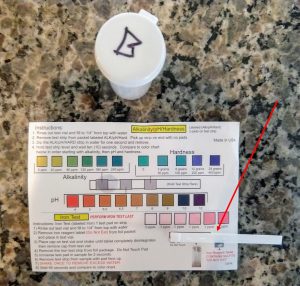
Repeat all three tests for each of your samples. When you are finished don’t forget to wash your hands with soap and water.
Results
Now that you have completed each of the tests on your four samples, it’s time to look at your results. Ask yourself these questions:
- How did the control sample differ from the leaf water samples?
- Did one of the leaf water samples differ more than the rest?
- What results did you find the most surprising?
Record your answers on the “Notes” page. If you are doing a science project, create a graph to show your results. You can also use clear tape to fix the test sticks to the color charts to display your results.
Our hypothesis was that the leaves would change the composition of the water. We suspected that they might change the alkalinity of the water or the copper levels, and they did. What we weren’t expecting was how they would change the chlorine levels. What was surprising here, was that the leaves actually reduced the chlorine levels. Two of our samples reduced to chlorine to zero and the other cut it in half. We aren’t sure exactly why this happened, but we did learn that chlorine is one of the nutrients that help plants grow. Did any of your leaves reduce the chlorine in your samples?


